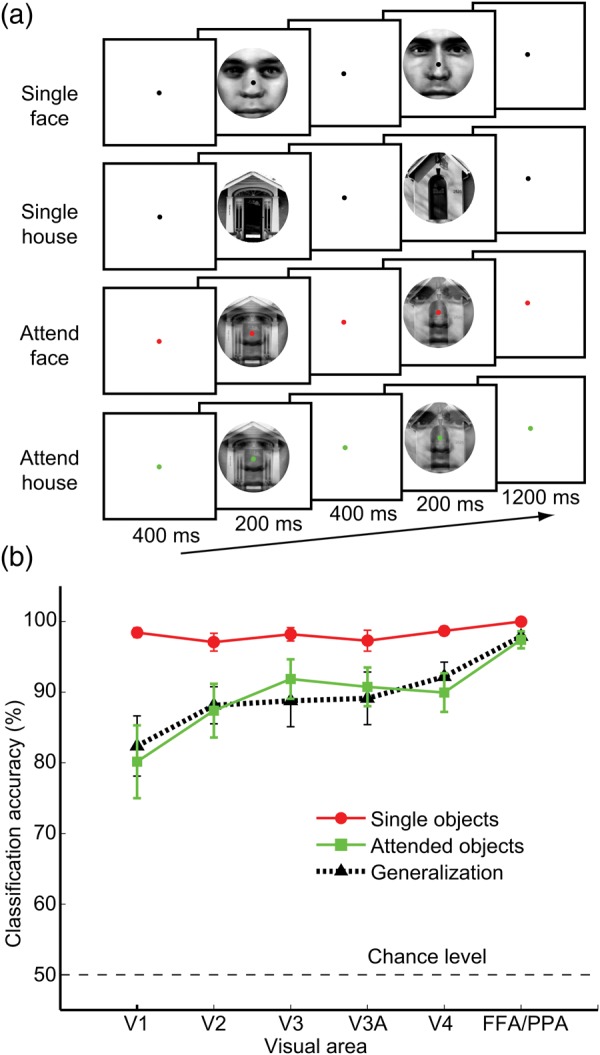Figure 1.

Experimental design and results of fMRI decoding. (a) Examples of trial sequences for the 4 experimental conditions: single faces, single houses, attended faces, and attended houses. Color of fixation point indicated the target object category in “attended” blocks. (Here, red indicates attend face and green indicates attend house; note that color assignment rule was switched halfway through the experiment.) Observers performed a same–different matching task for sequential stimuli within the target (face or house) class. Sequential pairs of objects in each class matched on 50% of trials. (b) Object decoding performance for areas V1 through V4 and pooled FFA/PPA. Mean accuracy of object decoding for single faces versus houses (red circles), attended faces versus houses (green squares), and generalization performance across conditions (black triangles). Linear support vector machines were used to classify multivoxel patterns of activity with mean amplitude removed, using the 125 most visually responsive voxels in each area. Error bars indicate ± 1 SEM. Decoding for FFA alone was 98 ± 1% for single objects, 95 ± 2% for attended, and 92 ± 3% for generalization. For PPA, decoding was 99 ± 0.3% for single objects, 95 ± 2% for attended, and 95 ± 2% for generalization.
